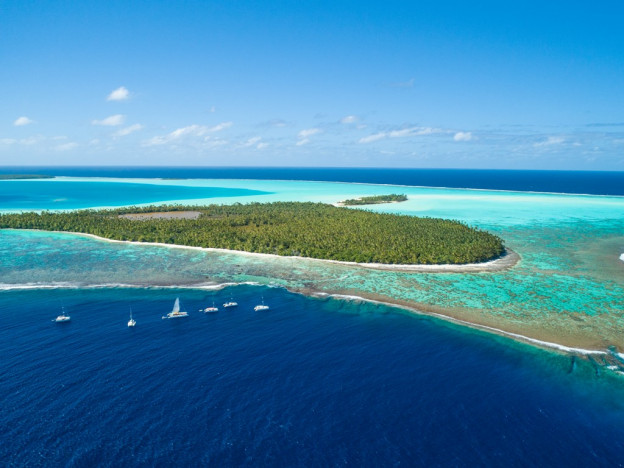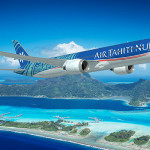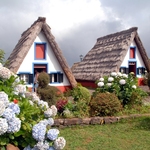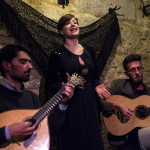Bora Bora may be the marquee island that grabs the tourist headlines, but Andy Mossack reveals some spectacular alternatives as he goes island-hopping in his guide to the Islands of Tahiti.
This is a cool fact. The 118 Islands of Tahiti combined, is a region the size of Europe. The only difference is most of that mass is the South Pacific Ocean, some 3,000 miles from any continent.
This fact alone gives a clue as to what lies in store for you in this guide to the Islands of Tahiti; one of the last corners of the globe to be populated by humans. Given that number of islands, think about what you might be missing out on if you visit the South Pacific and simply park the bus on Bora Bora?
This region is a place of unparalleled beauty; islands of soaring green peaks, surrounded by picture-postcard coral reef lagoons and iridescent water so extraordinary it has to be seen to be believed. It invented the overwater bungalow concept and gave us words that have crept into our everyday language; taboo, tattoo and of course, the delicious Mai Tai.
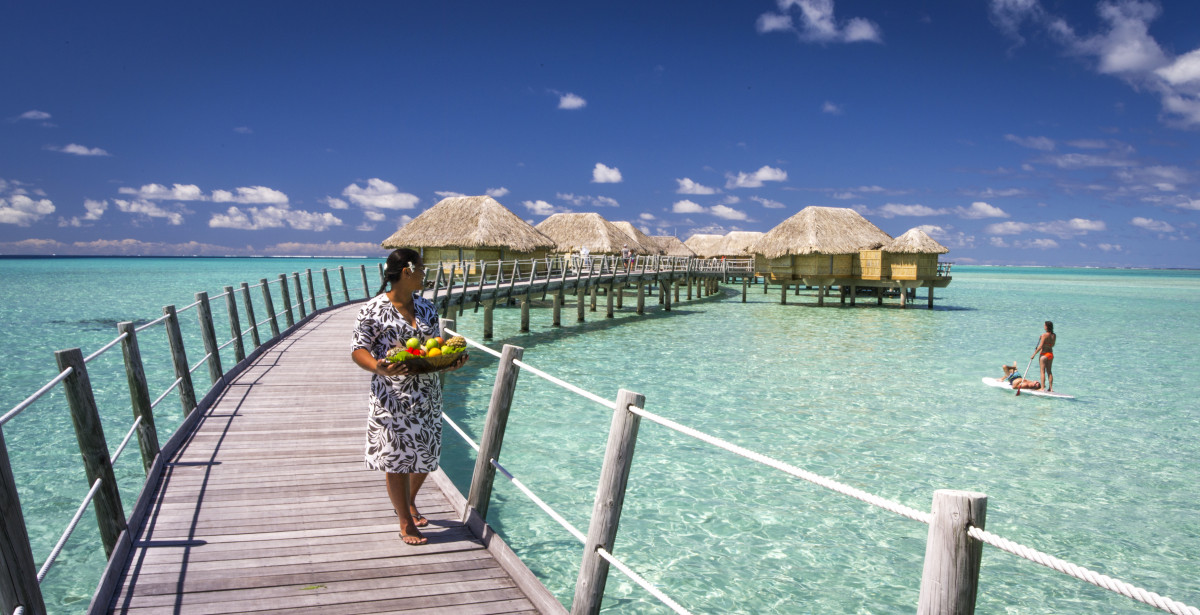
There is such astonishing natural beauty everywhere you look, but if you’re yearning to explore beyond Bora Bora, come with me around some of my personal highlights in my guide to the Islands of Tahiti and get to channel your inner Captain Cook.
The Society Islands: Tahiti, Raiatea and Huahine
Our first port of call in my guide to the Islands of Tahiti is the Society Islands. Named after the Royal Society of London which funded Cook’s first voyage here in 1769, they lie right at the centre of the archipelago chain and are the beating heart of the region. They contain two further groups of islands; the Windward Islands which includes the island of Tahiti (the biggest and most populated island where lies the capital, Papeete), and the Leeward Islands, where you’ll find Bora Bora, some 300 km from Tahiti.
Tahiti
It’s a long flight from Europe, via a short transit stop in Los Angeles, but all the more bearable with Air Tahiti Nui’s Premier cabin. Tropical pastel interiors, plenty of legroom, some thankfully generous recline seating and some tasty meals.
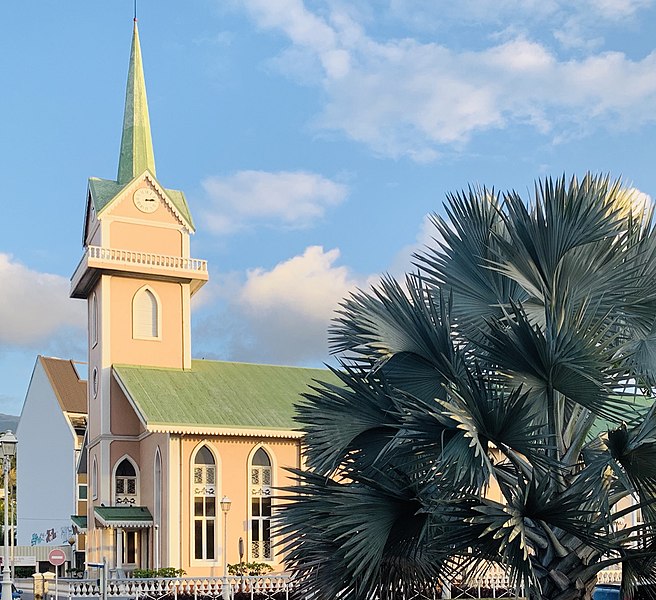
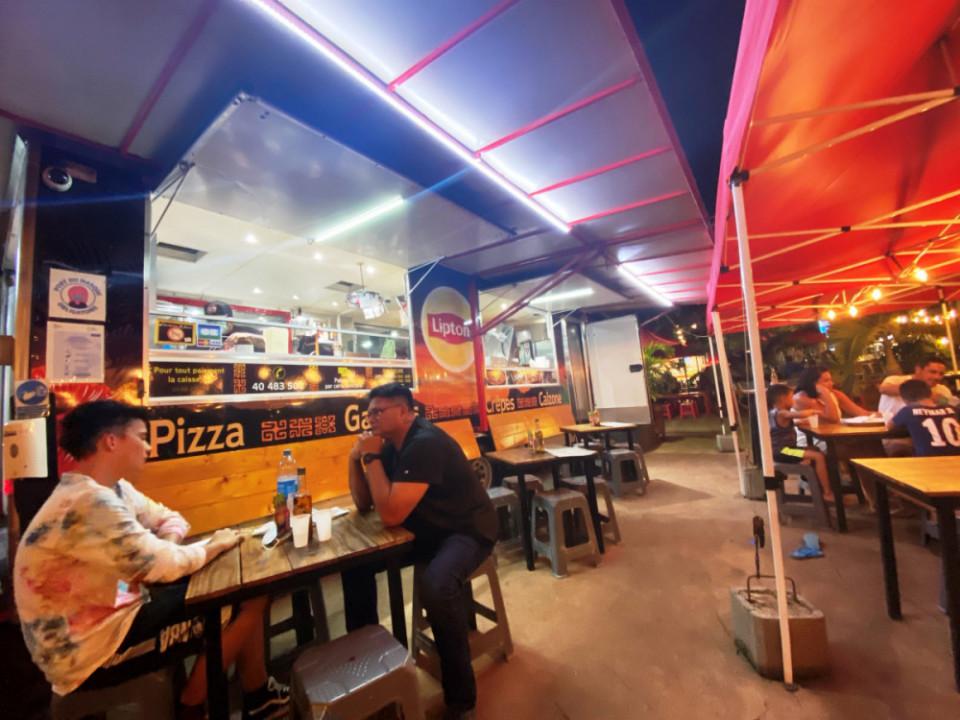
You’re flying into Papeete so it’s worth a look if you have the time. Its colonial past is evident everywhere you look. The pink filigreed Protestant Temple de Paofai is a historic reminder of William Crook’s missionaries who built it in 1873. Just opposite you can have a wander along the Waterfront which runs for a kilometre, lined with palms and lawns.
The enormous Marché Municipale market with its exotic fruits, vegetables and fresh fish is a great way to get some local colour. Sundown heralds a trip for locals to Vaiete Park where the roulottes reside. These are food trucks and offer all kinds of cuisine from pizzas to local specialities. Plenty of local families come out to eat here and the food and hygiene is strictly controlled by the authorities.
Raiatea
It’s just a 40-minute flight across to Raiatea on the Leeward Islands, revered as the cradle of the entire Polynesian culture. It lies at the epicentre of the ‘Polynesian triangle’ between Hawaii in the north, Easter Island in the southeast and New Zealand to the west.
The first land ancient mariners from these three points would reach on their extraordinary voyages of exploration paddling in double-hulled canoes. I’m met by Vivien, who takes me on a kayak tour along the Faaroa River, the only navigable river in the islands.
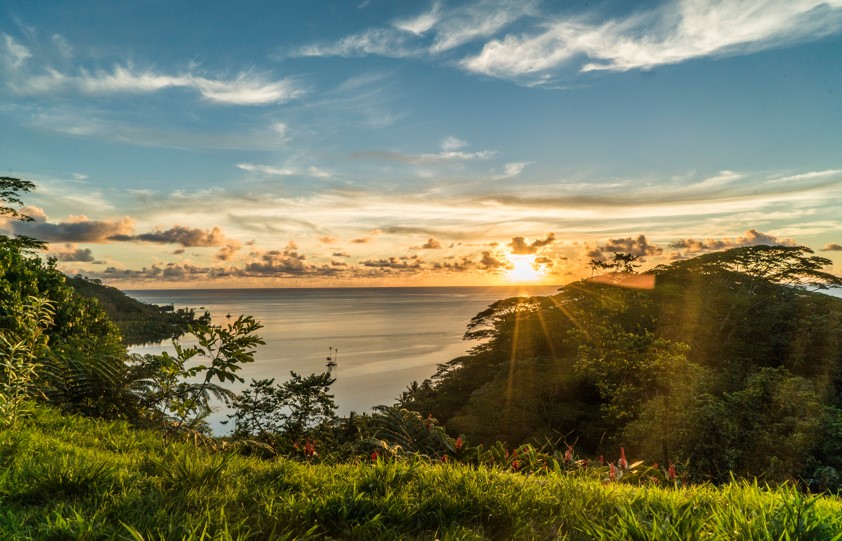
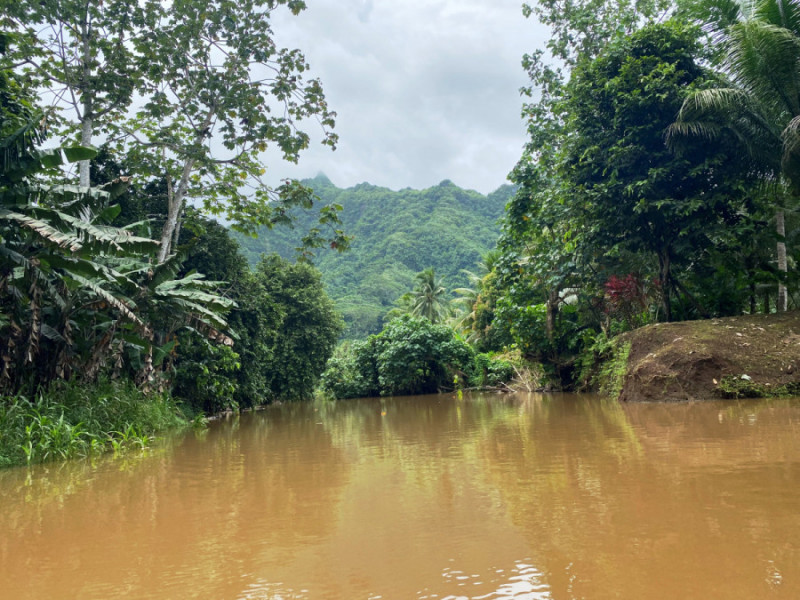
While I can’t even begin to compare myself with those first intrepid explorers, I do feel a frisson of adventure as we paddle along the lush interior. Wild hibiscus (parau), Pacific chestnut trees (mape) towering bamboo groves, banana trees and Birds of Paradise line the river, a scent of vanilla permeating the air. “Hey Andy, let me show you a waterproof leaf,” says Vivien as we pause by a bank.
He grabs a nearby taro leaf and dips it in the water. “We put in the water and when we take it out voila – bone dry!” And it is. Remarkable. It’s blissfully silent apart from occasional birdsong and a perfect way to be at one with Raiatea’s tropical interior.
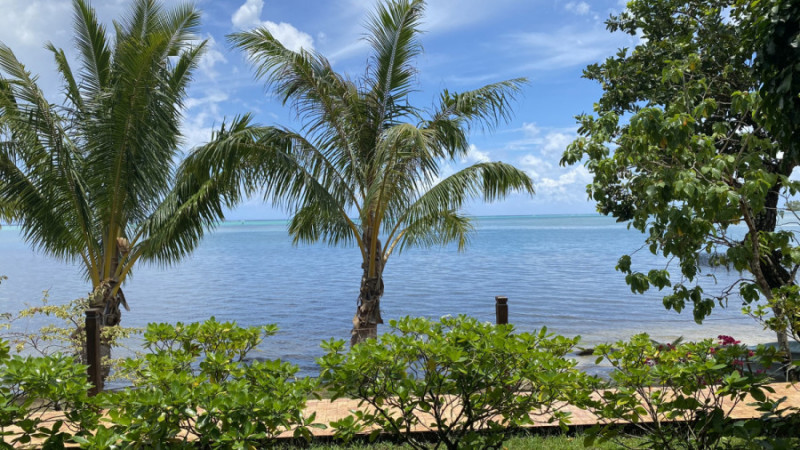
I stay the night at Fare Vai Nui, a lagoon-side family-owned pension with an excellent restaurant, and sleep dreaming about waterproof taro leaves.
Yacht Charter Raiatea to Huahine
In the morning I’m back at Raiatea’s tiny airport but not to catch a plane. I’m joining a yacht charter to spend two nights aboard a crewed Catamaran to sail across to Huahine and they’re picking me up at the adjacent dock.
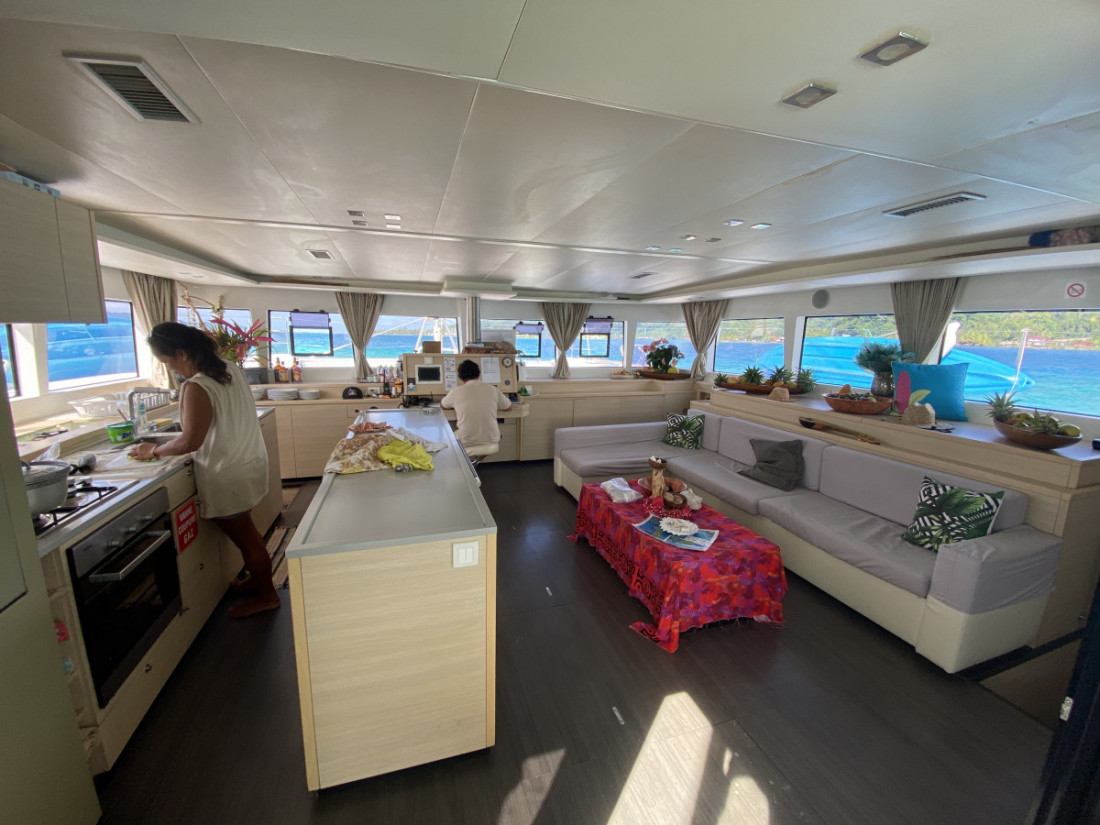

I’m sharing this ensuite-cabined yacht with four couples from the USA who have already been on board a few nights, and while we’re anchored out in the bay, I bond with my new shipmates over lunch prepared by Nune, our private chef. No question about it, the view from a yacht is a very special way to enjoy the Islands of Tahiti. My ensuite cabin is compact but comfortable with a very large bed that’s raised up like a dais with steps on either side. I pray I won’t have to negotiate them in the dark overnight. Could be awkward.
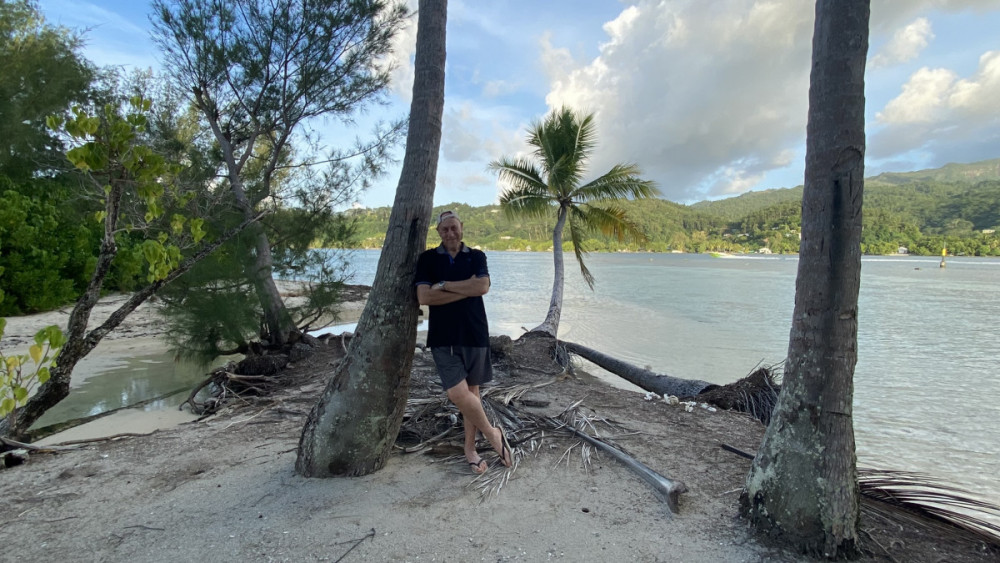
In the afternoon, all the toys come out – stand-up paddleboards, snorkelling, fishing and swimming in crystal clear warm water. We park up near a small, deserted atoll and take the dinghy to explore ashore. We watch as the sunset approaches and the Robinson Crusoe in me has a proper moment. Back on board in time for dinner, I ask, “do we get dressed up?” Brad answers “I’m wearing a t-shirt over my swimmers if that’s what you mean?” Definitely my kind of people.
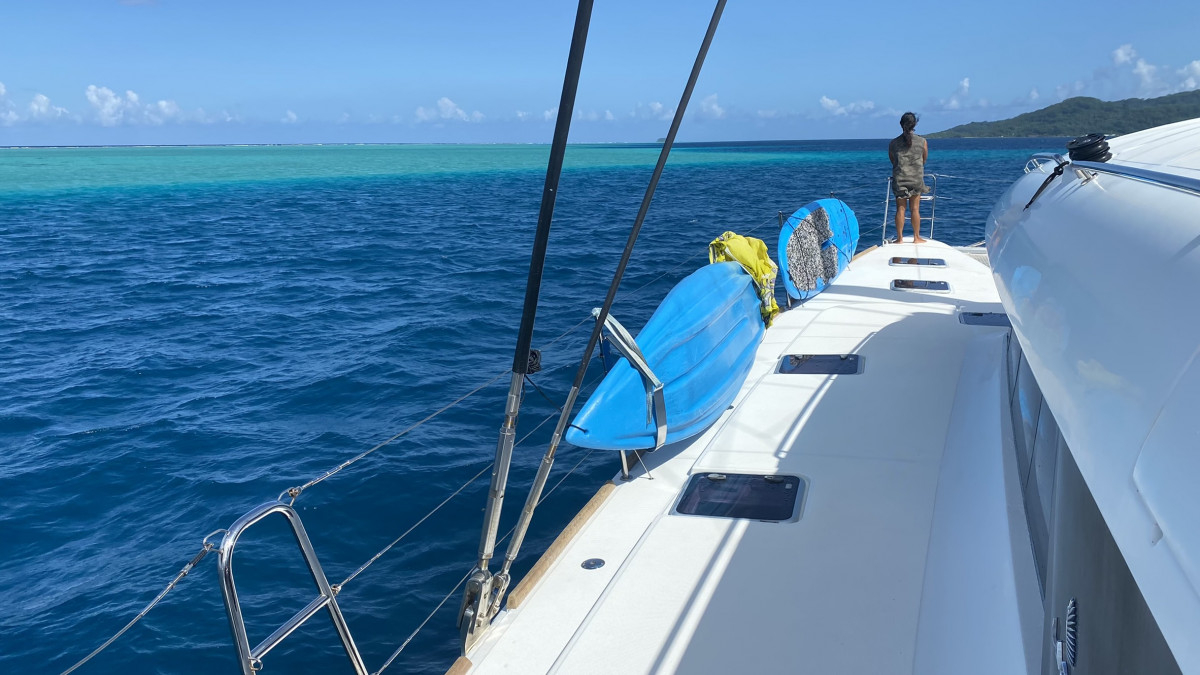
I sleep soundly, rocking gently in the bay, and the next morning after a lavish breakfast buffet I’m back ashore for a private tour to visit the UNESCO protected Taputapuatea Maraes, the ancient religious and ceremonial site of the archipelago chiefs. It’s a peacefully beautiful place to learn about Polynesian traditions and beliefs before their enforced conversion to Christianity in the 19 th century.
Standing there among the tiki statues and maraes with the lagoon lapping so close, I find it even more spiritual listening to stories from my guide Anna, an islander who grew up around these ancient stones.
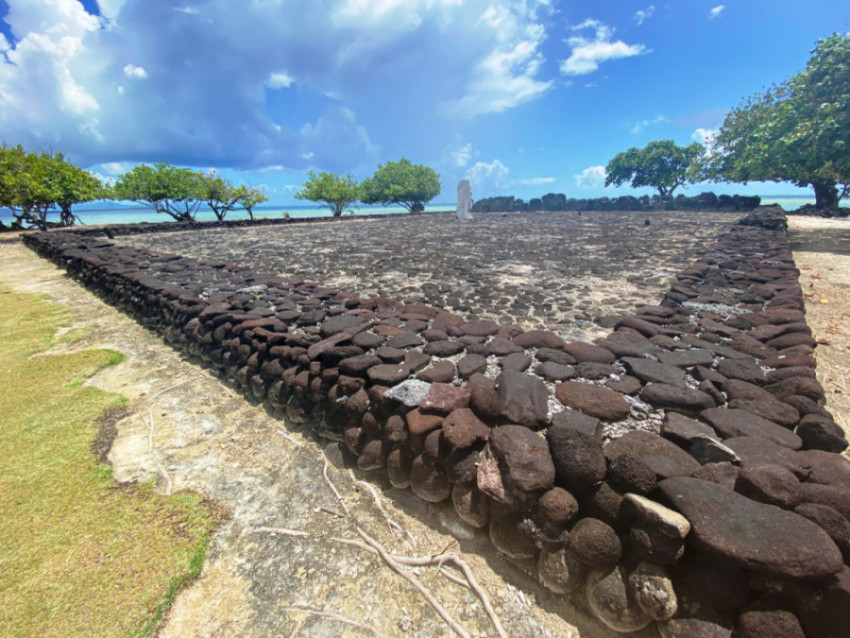
We sail overnight to Taha’a, another impossibly beautiful island, and all the toys make another appearance. Then it’s on to the twin islands of Huahine where I part ways with my new shipmates to explore an island that locals refer to as “Tahiti’s hidden one”.
Huahine
No guide to the Islands of Tahiti should miss out Huahine. Huahine is essentially two islands connected by a small road bridge, Huahine Nui (Big Huahine) and Huahine Iti (Little Huahine). Just 10 miles long and 8 miles wide and fringed by a coral reef, what it lacks in size it makes up for in beauty. At the dock in Fare, the tiny capital, mere metres from where Cook came ashore to meet Queen Teha’apapa in 1769.
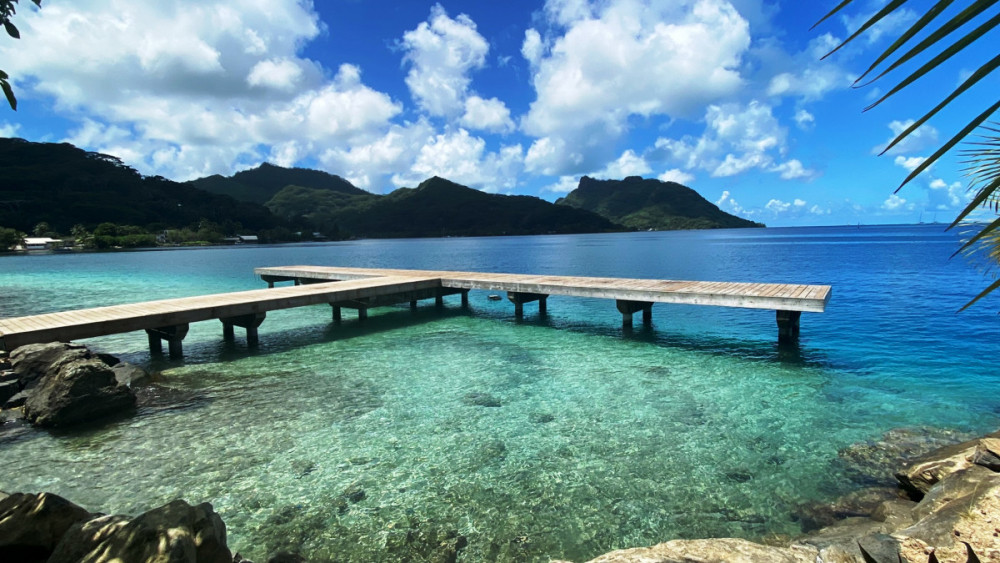
I meet up with Paul who’s eager to share his local knowledge. We stroll along Fare’s single street lined with coconut palms, a few shops and local street traders selling fresh fruit and veg. Close to the bridge connecting the two islands at the tiny village of Faie we park and hike up to the summit of Mount Pohue Rahi. Lush vegetation and tall pines make the going tricky. With Paul leading the way we pass through the remains of many marae temples “This whole area was very special and reserved just for royalty.”
We’re rewarded at the marae summit with a glorious panorama across the islands. Far below I spot submerged stones built in the shape of a V formation, an ancient technique used to trap fish which local fishermen still use today.
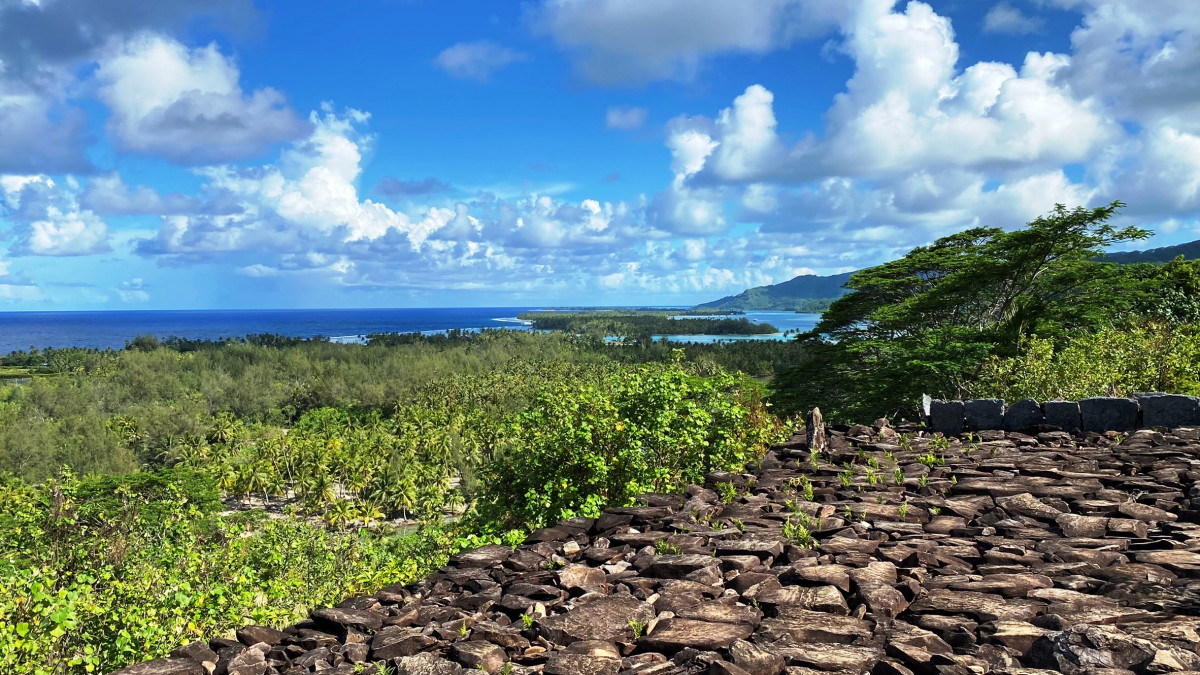
Back at the bridge, one more surprise awaits. Giant blue-eyed eels. These sacred creatures, who it is said guard the memory of ancient gods, have lived happily for generations in this shallow freshwater creek, knowing they‘ll be rewarded for their guarding duties with regular supplies of hand-fed mackerel from visitors. And yes, they really do have piercingly blue eyes.
I spend the night in a dreamy lagoon-front bungalow at the Le Mahana Hotel. An astounding location and another excellent restaurant. Of all the spectacular sunsets I’ve enjoyed on this trip, this one, on the deck of my bungalow, is by far the most memorable. I snap a picture of a single stand-up boarder lit by the last golden ray of sunshine. A potential prize-winner might I suggest?
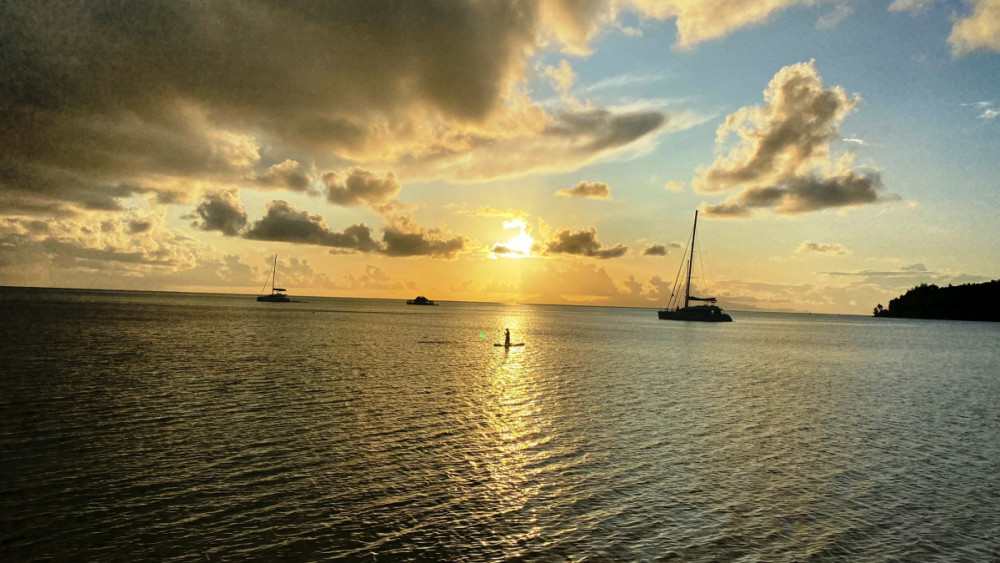
The Marquesas Islands
Unbelievable for a guide to the Islands of Tahiti, but at almost 1,000 miles and a 3-hour flight away from Tahiti, the 12 islands of The Marquesas (the Islands of men) offer a completely different experience. The weather here is a lot drier, the beaches are black sand, there are no coral reef lagoons, and even the time is different, losing half an hour to Tahiti time. But different is no less wondrous.
Towering rocky peaks and deep sweeping valleys are the signature landscapes here. And there’s a natural feel to life on these islands. The islanders live off the land wherever possible. Huge sections of private land handed down through generations provide fertile hunting opportunities for wild boar and goats, crops and fruit are in abundance, wild horses roam free and there are ancient signposts to the past everywhere.
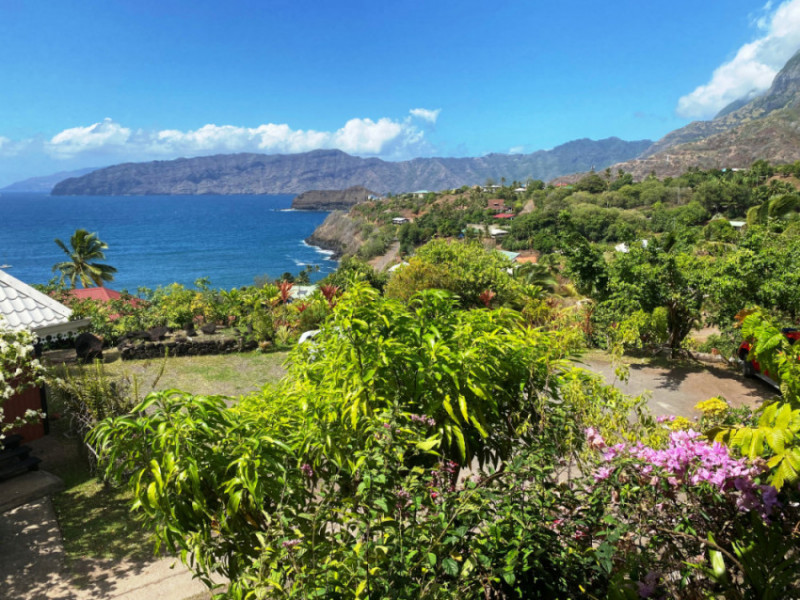
Hiva Oa
I fly into Hiva Oa, The Marquesas’ second biggest island, and the last resting place of French artist Paul Gauguin. I meet up with Brian O’Conner, something of a legend here, a native Marquesan from a proud Irish lineage. His great-great-grandfather escaping the Irish potato blight, ending up here and marrying a local girl. He’s not just a guide, he’s also the local fireman, school guardian and plays a mean ukulele.
It’s a day spent discovering Nature, eating local cuisine in a Marquesan house, meeting the region’s tallest tiki and driving along a stunning cliff-top coastline. We even bump into his parents who are bringing one of their horses and a young cow back to their farm. Brian tells me “Our family has always owned large amounts of land here, and my dad taught me to hunt with a bow and knife from the age of six. Just for food though, not sport, and now I’m passing that knowledge on to my kids.”
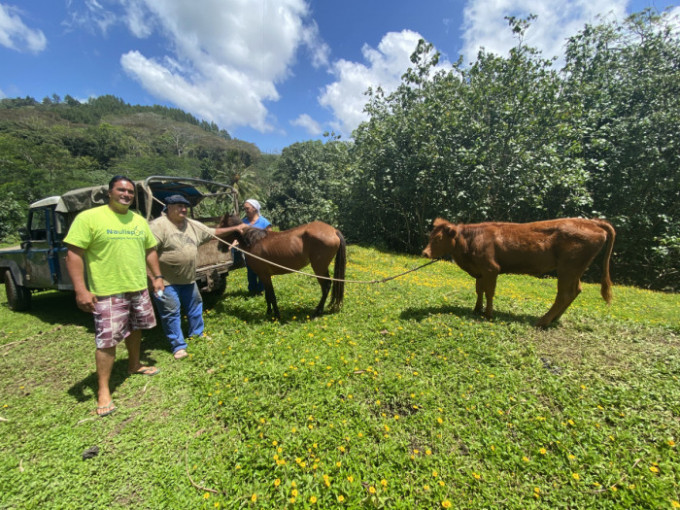
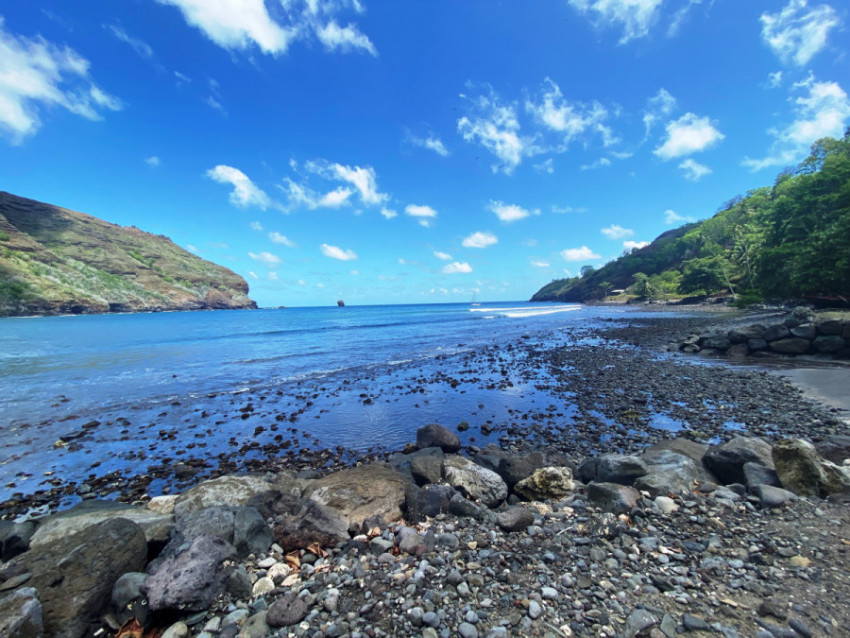
We arrive at Hanaiapa, a huge bay where The Pacific rolls in. “We break in wild horses in the surf,” he tells me. “It’s a lot easier to control them in the water and you don’t get hurt if you fall off!”
He stops at a roundabout and laughs at the futility. “A roundabout and a stop sign in the middle of nowhere. Honestly. Do you see any other traffic?” We discuss the merits of other obscure French traffic laws until we arrive at the village of Puamau for lunch at a local farm. It’s a right royal feast including kaaku, pounded breadfruit mixed with coconut milk, poisson cru (considered as the national dish) raw tuna marinated in lime juice and coconut milk, some roasted goat and pork cooked in the traditional way wrapped in banana leaves and buried in the earth above burning embers.
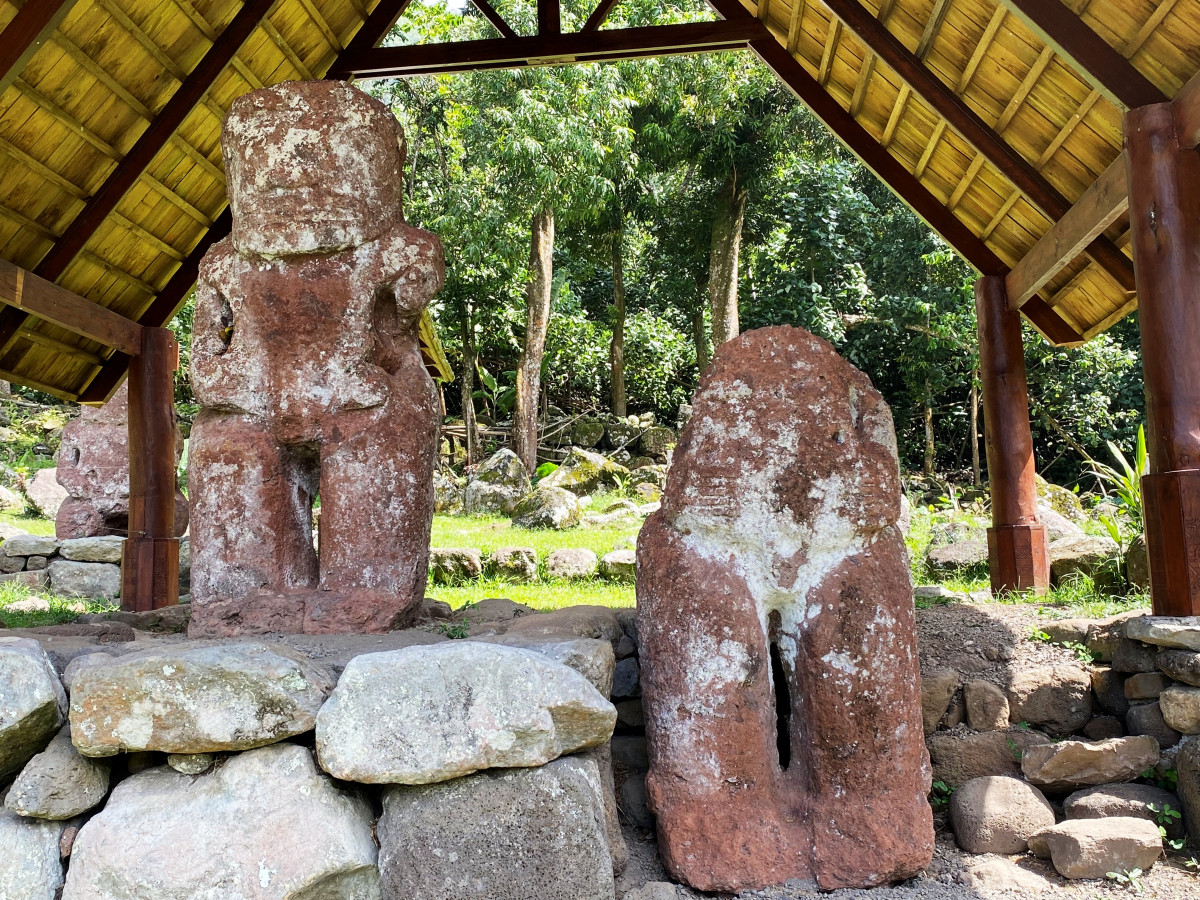
Just by here is Te Lipona a remarkably intact archaeological site containing some extraordinary stone tikis, one of them the tallest in the entire region. Beautifully maintained, it’s a place to ponder awhile and I do just that, thinking of just how extraordinary the ancient Polynesian culture was in this remote corner of the world.
Nuku Hiva
The next morning I’m back at the airport for the short hop across to Nuku Hiva the largest island and the Marquesas capital. I’m staying at the Nuku Hiva Keikahanui Pearl Lodge which sits above Taiohae Bay on the south side of the island, and it’s a 90-minute drive across an extinct giant caldera to get there.
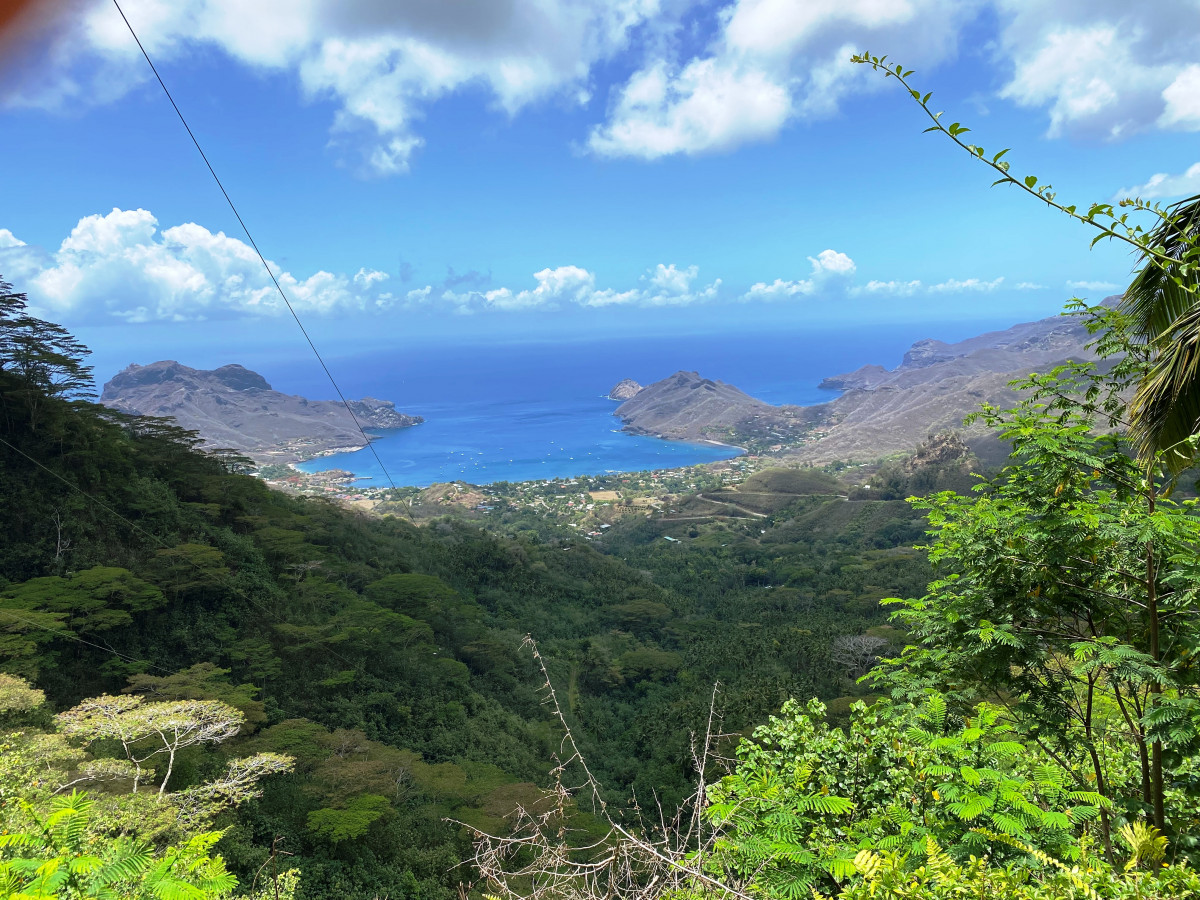
The scenery is jaw-dropping, more akin to a Swiss alpine landscape and we stop a few times to get out and drink it all in. After more than a few hairpin turns and passing a clutch of locals on horseback, we reach the south coast and drop down into the bay. The resort is made up of 20 bungalows perched on a hill overlooking the glorious bay and from my deck, I can see the distant line of volcanic peaks we had just crossed. I’m having yet another moment.
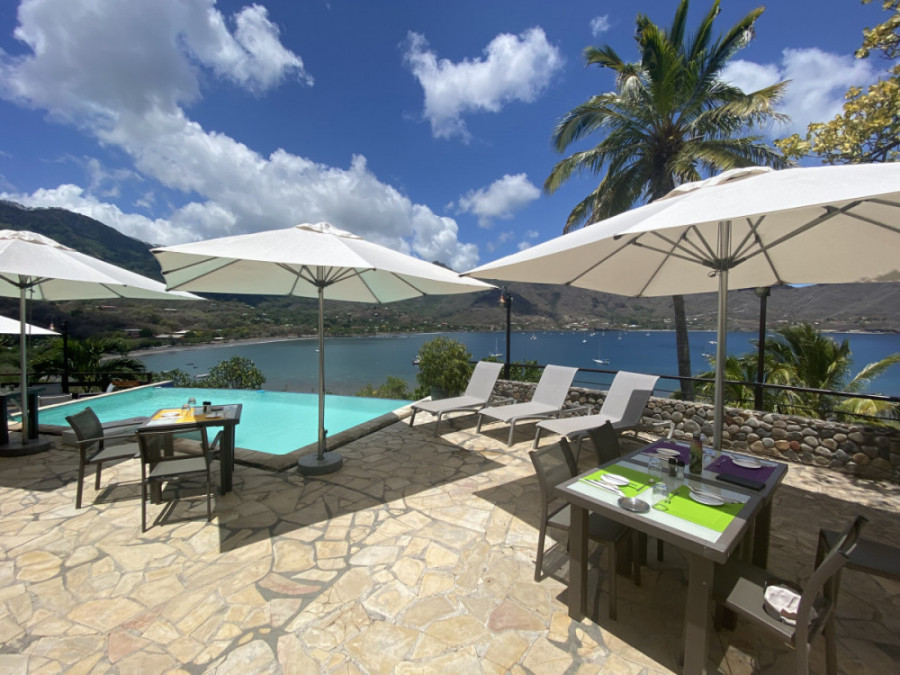
I’m picked up by Maria and Mai who are taking me on a speedboat tour around the rugged coastline. I’m waved at by giant manta rays as we power out of the bay, their wings flapping a greeting as we pass by. Giant cliffsides loom above me as we pause to take in the remarkable geology; multi-coloured layers of basalt from the dawn of time pounded by the Pacific for millennia.
Further along, the coast wild goats cling to the sides of the sheer rock face looking for food. After stopping at the couple’s small summer beach house so Maria can feed her two dogs crusty baguettes (this can only be a French tradition surely), we power back across the bay so I can get to the Pearl Lodge in time for dinner.
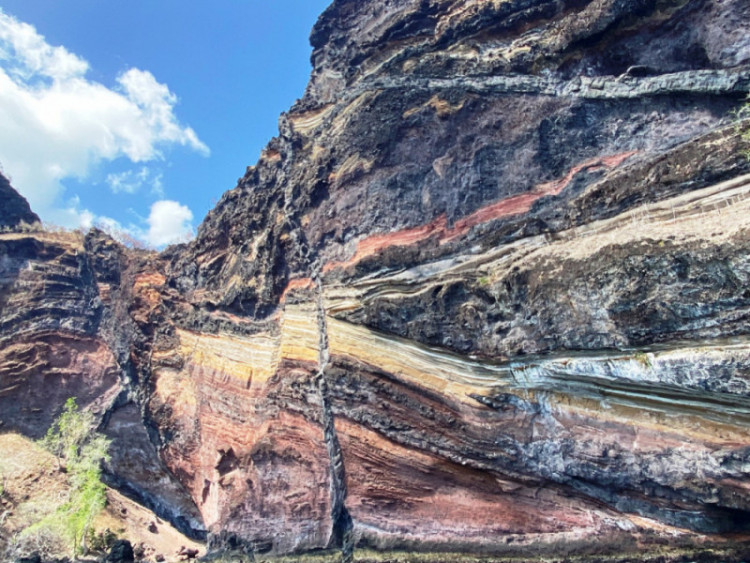
The wealth of archaeology apart, there are a couple of not be missed excursions on Nuku Hiva. The world’s third highest waterfall is Vaipo in the Hakaui valley at 350 metres, and let’s not forget the Notre Dame Cathedral at Taiohae. Whilst not as majestic as the original grand dame in Paris, and only dating back to 1977, it is nevertheless, another reminder of the strong Catholic roots originally brought by missionaries to these islands.
Flying back to Tahiti, I look back at my time on The Marquesas with genuine fondness. A complete contrast to the other Islands of Tahiti their laid-back lifestyle bereft of most of the trappings of tourism is so refreshing. An absolute must-see on any visit.
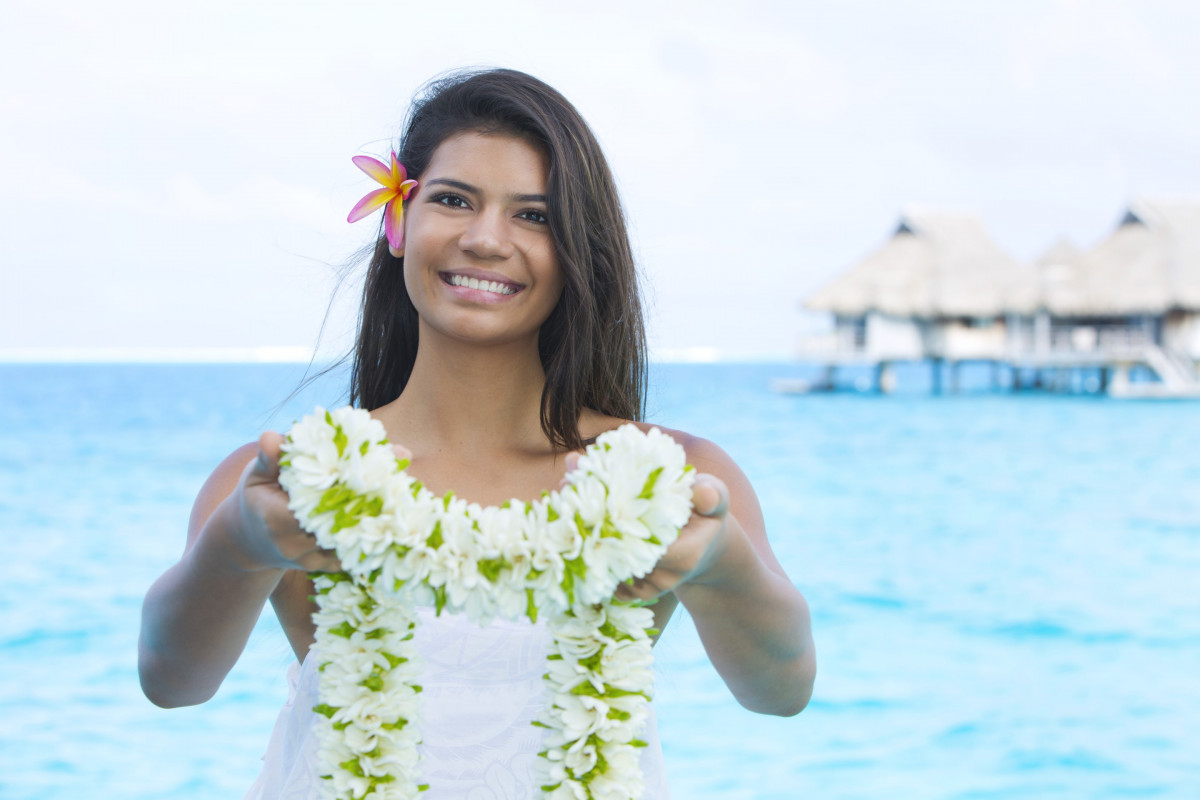
Island hopping for this guide to the Islands of Tahiti is a voyage of discovery on so many levels. The sheer variety of experiences and local characters is extraordinary and all well within reach through the excellent regular services by Air Tahiti.
The lure of Bora Bora’s beauty and relaxation has its appeal of course, but whatever you do, don’t miss out exploring the other islands in my guide to the Islands of Tahiti too. The memories will live long I guarantee it.
All images (C) Andy Mossack except featured image (Tahiti Tourisme) overwater bungalows (C) David Kirkland, Raiatea intro (C) Audrey Svoboda and Welcome Lei (Tahiti Tourisme)
Tell me more about this guide to the Islands of Tahiti
You will find more about this guide to the Islands of Tahiti and more, at the official Islands of Tahiti website.
Air Tahiti Nui is the national carrier to French Polynesia with departures from Paris, Los Angeles, Tokyo and Auckland with connection flights available from London Heathrow with partner airlines.
Charles De Gaulle Paris to Papeete via LAX. Economy class return fare from £1,280 (included ticketing fee). Premium Economy return fare from £3,220 (included ticketing fee). Please note that all fares quoted are subject to availability and subject to change at any time.
Where to Stay on this guide to the Islands of Tahiti
Tahiti
The Hilton Hotel Tahiti Beautiful resort hotel only recently opened close to Papeete Airport.
Intercontinental Hotel and Resort and Spa Tahiti Another luxury offering close to the airport with main buildings and over-water bungalows.
Raiatea
Fare Vai Nui As mentioned above, lovely family-owned pension with lagoon facing bungalows and an excellent restaurant.
Huahine
Hotel Le Mahana Right on Avea Bay lagoon within its own coral gardens, spacious bungalows facing the lagoon. Excellent restaurant.
Nuku Hiva
Nuku Hiva Keikahanui Pearl Lodge Relais & Chateaux hotel overlooking the gorgeous Taiohae Bay. Lovely hillside bungalows all with views of the bay. Very good restaurant too.
Yacht Charter
Dream Yacht Charters Luxury crewed catamaran charter with five cabins. Includes full-board personal chef. All drinks apart from water are extra. A yacht charter is an essential ingredient in this guide to the Islands of Tahiti.

